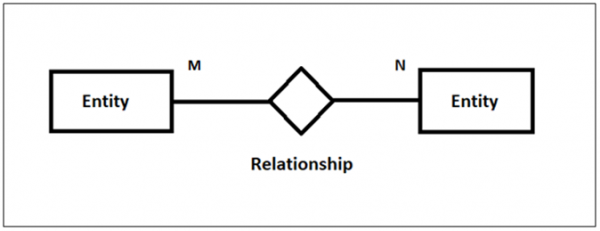
 Data Structure
Data Structure Networking
Networking RDBMS
RDBMS Operating System
Operating System Java
Java MS Excel
MS Excel iOS
iOS HTML
HTML CSS
CSS Android
Android Python
Python C Programming
C Programming C++
C++ C#
C# MongoDB
MongoDB MySQL
MySQL Javascript
Javascript PHP
PHP
- Selected Reading
- UPSC IAS Exams Notes
- Developer's Best Practices
- Questions and Answers
- Effective Resume Writing
- HR Interview Questions
- Computer Glossary
- Who is Who
Many-to-Many Relationship in DBMS
Many-to-Many relationship in DBMS is a relationship between more than one instance of an entity with more than one instance of another entity i.e. both the entities can have many relationships between each other.
The relation can be stated as −

Let us see an example −
Many Authors can write a Book, whereas an Author has written more than one book.
Here, Book and Author are entities.
Let’s say a book has two authors, whereas an individual author has written six books till now.


Advertisements
